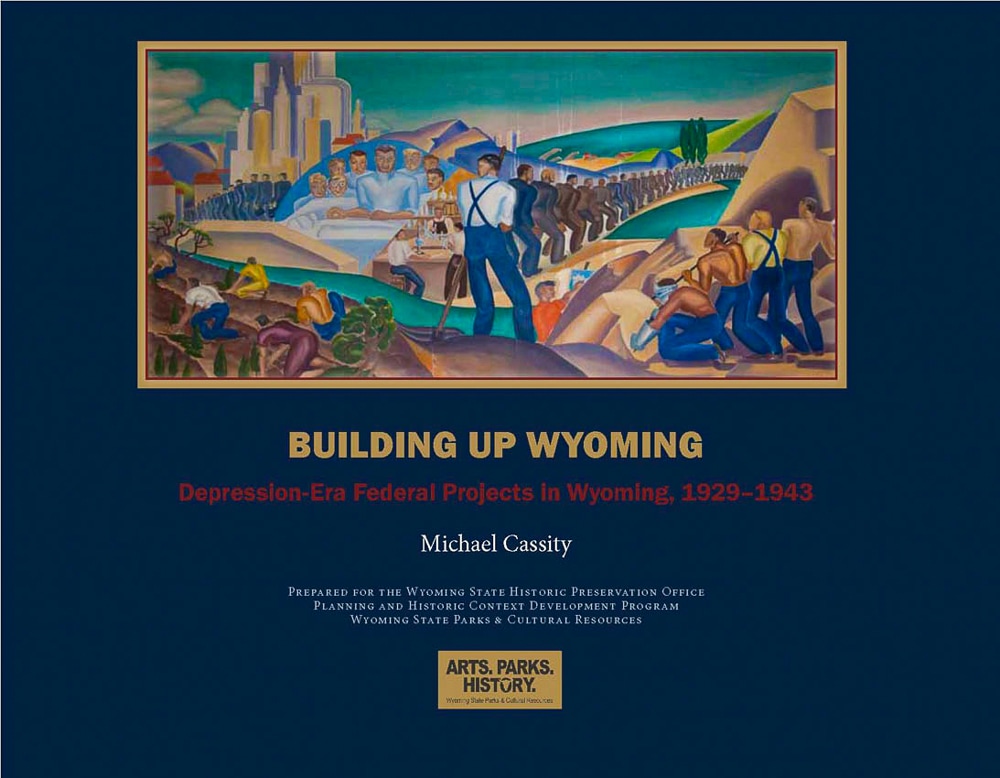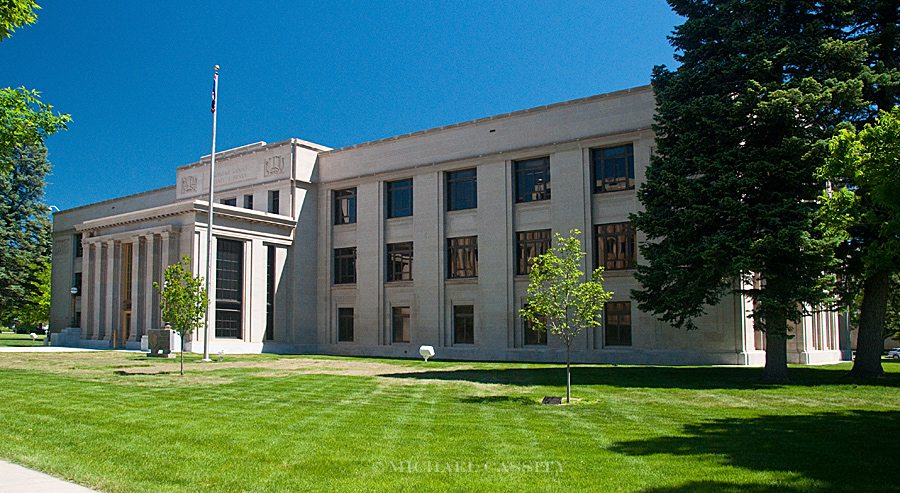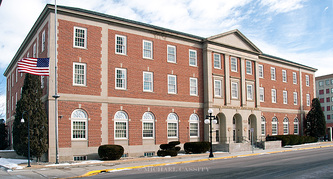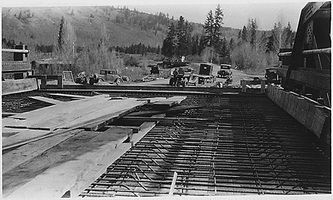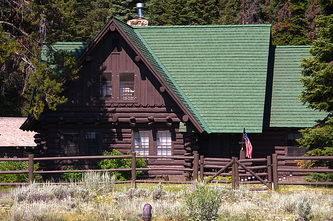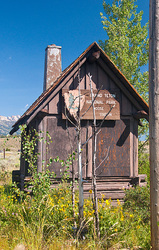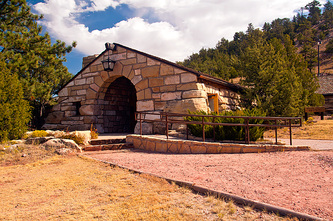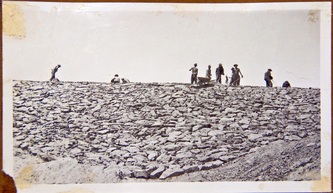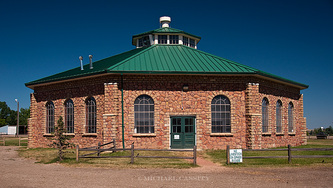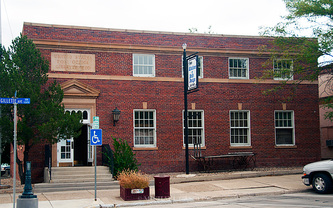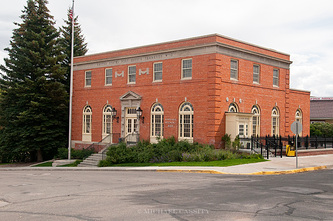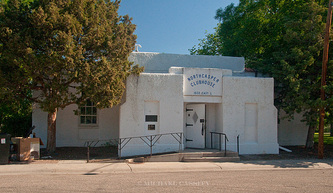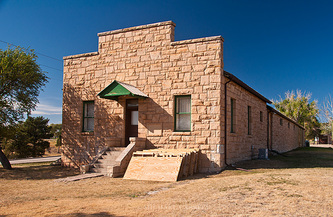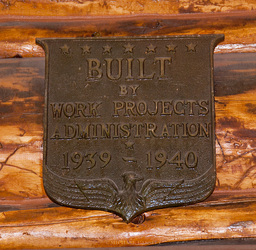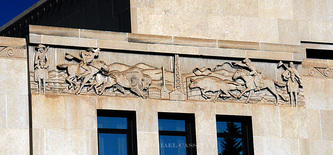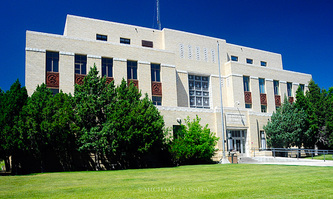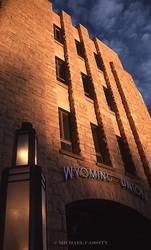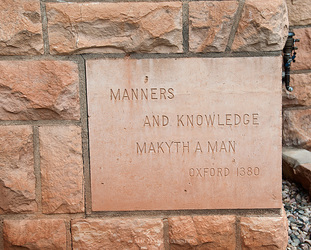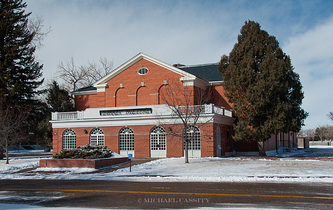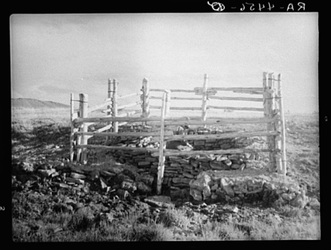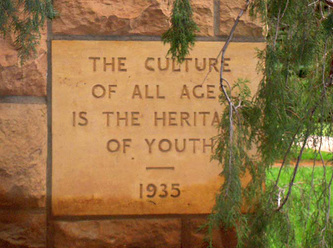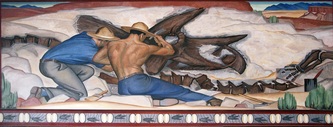Michael Cassity, Building Up Wyoming:
Depression-Era Federal Projects in Wyoming, 1929-1943.
Michael Cassity, Building Up Wyoming: Depression-Era Federal Projects in Wyoming, 1929-1943 (Cheyenne, Wyoming: Wyoming State Historic Preservation Office, 2013. x + 264 pp. Notes, bibliography, index, illustrations.) Cloth, paperback ($45), and also available as a free PDF download on this page (scroll down to PDF: Building Up Wyoming link) or at the Wyoming State Historic Preservation Office website, http://wyoshpo.state.wy.us/pdf/BuildingUpWyoming.pdf. Paperback copies of the study can be purchased from the Wyoming State Museum Store. Contact http://wyomuseum.state.wy.us/Shop/Index.aspx or call (307) 777-5320.
This study is a scholarly examination of the transformation of Wyoming by federal programs launched during the Herbert Hoover and Franklin Roosevelt administrations during the Depression to put people to work and to build up the state’s social, economic, and physical infrastructure.
The post offices, ranger stations, dams, roads, airports, art works, and other physical remnants of work projects constitute a visible legacy of the work-relief efforts of the federal government, but this study suggests, by examining the state of Wyoming, that as important as these are in their own right, they are also signs of a larger transformation underway. In Building Up Wyoming: Depression-Era Federal Projects in Wyoming, 1929-1943 Michael Cassity draws upon primary sources (including project files of the Civil Works Administration and Works Progress Administration in Wyoming, records of other federal and state agencies, contemporary newspapers, and other documents) as well as published and unpublished scholarly literature to explore the patterns and contours of change for farmers and ranchers, for women, for people living on the Wind River Indian reservation, for merchants in the towns, and for the unemployed, in each case seeking to identify the goals, assumptions, and impacts of the projects. Cassity observes, “As for the overall pattern of change, a society, an economy, and a state were being transformed in a process that moved a nearly pre-industrial set of values, relationships, purposes, and organization to factory models of work and production, and from voluntary assistance (with all its limits) and neighbors helping neighbors in crisis to an industrial, even military, organization and purpose (with all its limits). Wyoming would never be the same.” (from the Introduction)
Building Up Wyoming: Depression-Era Federal Projects in Wyoming, 1929-1943 was prepared for and published by the Wyoming State Historic Preservation Office to guide researchers in the evaluation of Depression-era properties for their historical significance and possible eligibility for the National Register of Historic Places, and in doing so it explores the historical context in which those resources emerged and provides a fresh re-examination of an important element of the state’s history. Moreover, Cassity’s formulation of the questions and issues on which the study focuses gives his findings relevance beyond the borders of this one state.
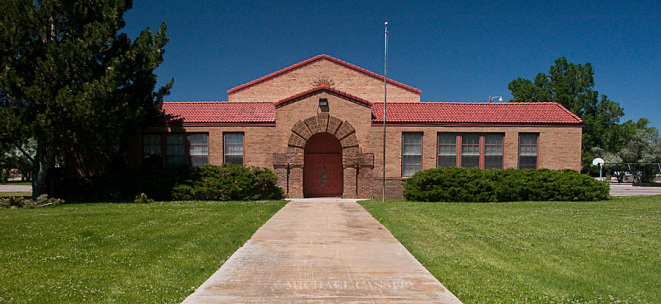
Parco (Sinclair) School. Constructed by the PWA, this school became something of a showcase school by that agency, featured in its national report at the end of the decade. The PWA description of the Parco school noted that the new 1936 school “replaced a leased 4-room dilapidated wooden structure and two apartments rented for classrooms in an apartment building.” The new building, by contrast had “eight classrooms and a centrally located combination playroomauditorium
with clerestory windows. The construction is semifireproof, the walls being brick and the roof wood covered with Spanish tile. The exterior walls are faced with two colors of brick, the darker shade being used for a base and trim around the entrance and certain windows.”
with clerestory windows. The construction is semifireproof, the walls being brick and the roof wood covered with Spanish tile. The exterior walls are faced with two colors of brick, the darker shade being used for a base and trim around the entrance and certain windows.”
Depression-Era Federal Projects in Wyoming, 1929-1943
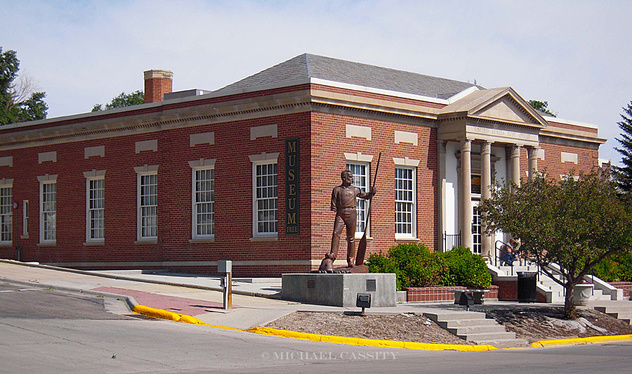
Green River Post Office, constructed during Hoover administration.
As much as the New Deal has been studied, as much as it has been invoked either as a model to be emulated or as an example to be avoided, there are surprisingly few studies at the state and local level of the impact of the programs and of the physical changes on the urban and rural landscape those programs left behind. Moreover, the relationship of the Roosevelt administration’s work-relief projects to the programs of the Hoover administration that came before it and to the programs often connected only to war preparations has too seldom been examined.
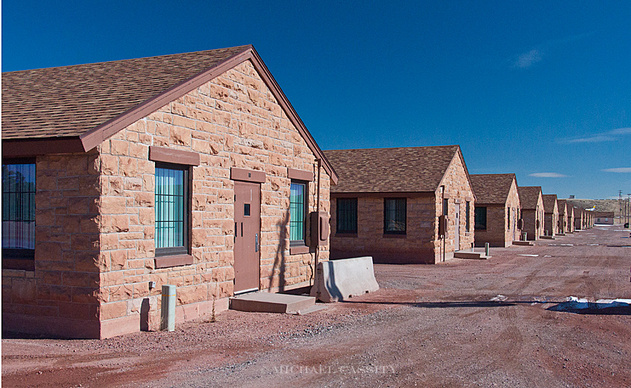
Kitchens constructed by WPA for Wyoming National Guard at Camp Guernsey in 1939 as New Deal projects focused increasingly on military construction. Note WPA medallion above door on first kitchen.
This study attempts to understand those federal projects, all the way from the beginning of the Depression in 1929 to American entry into World War II in 1941 and beyond that to the closing down of the work projects in 1943. In fact, to better understand the changes in the social, economic, and governmental structure of this one state, Wyoming, the study also examines the social fabric of the state in the 1920s.
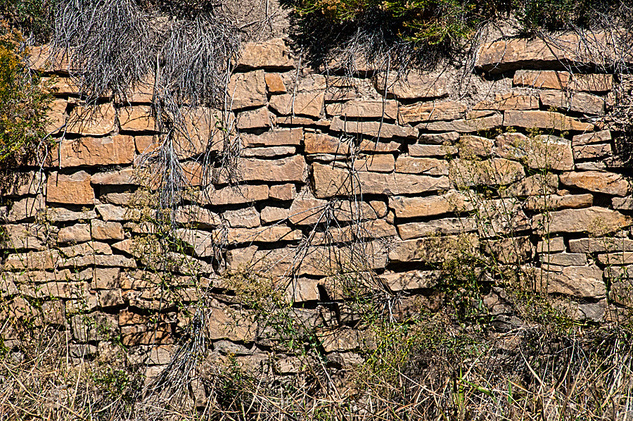
Riprap on Bitter Creek in Rock Springs. Bolstering streambeds and drainages to prevent flooding proved to be a popular and necessary WPA project in Wyoming.
One aspect of this study is especially notable. Many studies, especially those that look at buildings, structures, and objects left by programs like the Works Progress Administration, the Public Works Administration, the Civilian Conservation Corps, and so on, tend to treat them as if those programs were static and unchanging. Moreover, attention seems to be focused on the biggest programs, the most dramatic (romantic?), and leaving in the shadows the lesser known, short-lived, but equally important agencies like the Civil Works Administration. This study of the programs in Wyoming, however, shows how the programs—and their projects—evolved over time so that, say, the CCC was not the same in 1938 that it had been in 1934, and that the WPA, to take another key work-relief program, was very much different in 1939 than in 1935. An essential part of this evolution is the development of increasingly industrial forms of work and production. Even women’s sewing rooms, at one time decentralized, individualized work operations where women acquired skills in making whole products, and used small bolts of material and different patterns to keep the clothes they made, to be distributed to the needy, from carrying any identity or stigma as relief clothes, to centralized production operations with actual assembly lines using long bolts of materials to produce more as cheaply as possible.
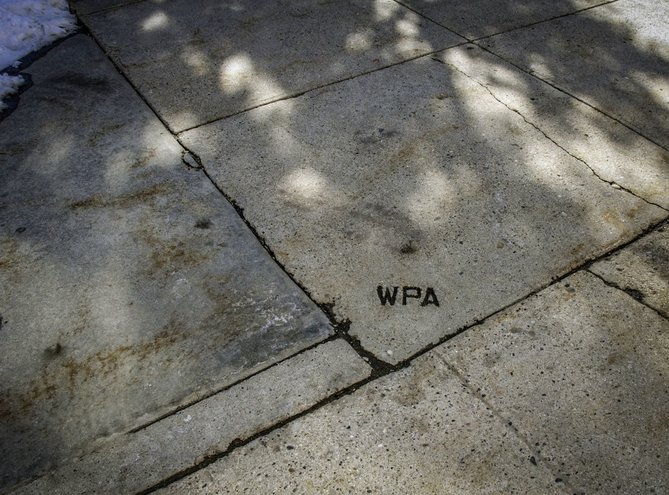
Sidewalk constructed by WPA in front of Natrona County High School in Casper.
In work processes, in building an economic and transportation infrastructure as well as the utility systems of sewers, water, and electricity, in focusing more and more on military activities, the federal projects were not just putting Wyomingites to work; they were transforming the economy and society.
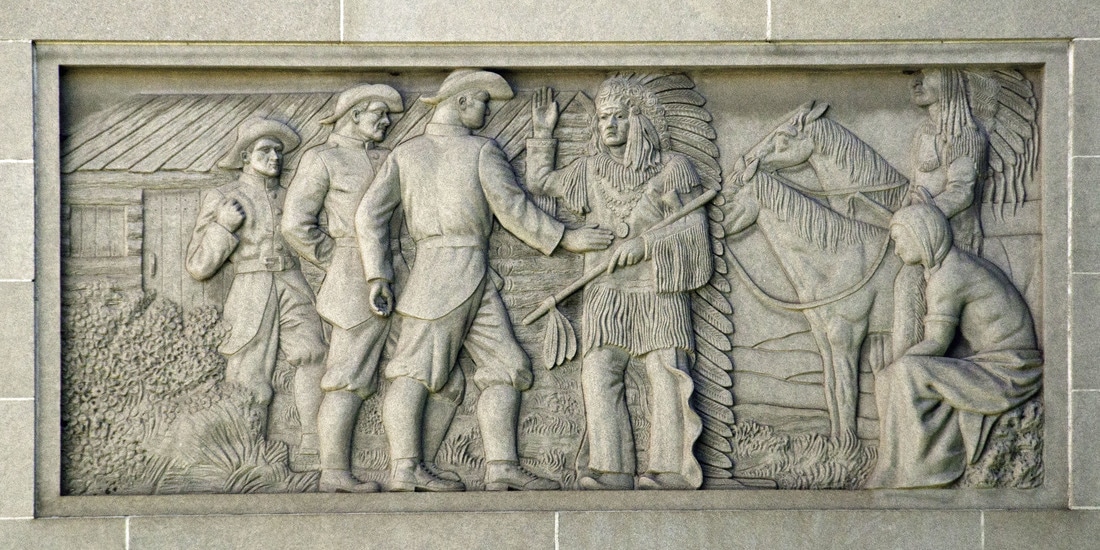
Detail from Supreme Court and State Library Building.
This project had several components:
One is the Multiple Property Document Form submitted to the Keeper of the National Register of Historic Places. This document was sent forward by the Wyoming SHPO after being approved by the Wyoming Review Board for the National Register and was approved by the Keeper on January 14, 2013. That MPDF can be viewed and downloaded here or the button below.
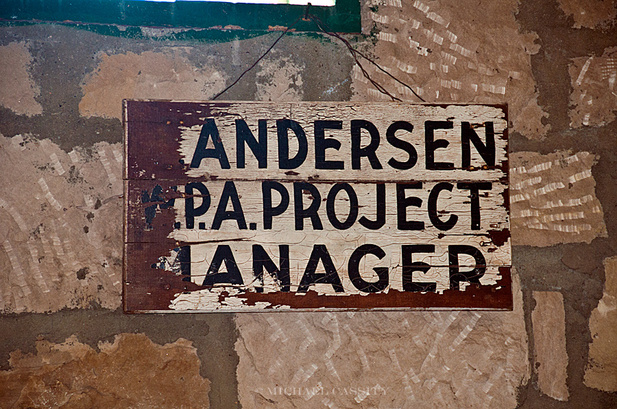
Sign used in construction of the National Guard unit cavalry stables at Newcastle; the stables are now the Anna Miller Museum. Note also stoneworker marks in cutting stones for the stables.
In addition, the content of the historic context portion of the MPDF is in the process of being published by the Wyoming State Historic Preservation Office as a book, Building Up Wyoming: Depression-Era Federal Projects in Wyoming, 1929-1943. When it is published a PDF of the book will be placed on this page and elsewhere so that it can be freely accessed and downloaded.
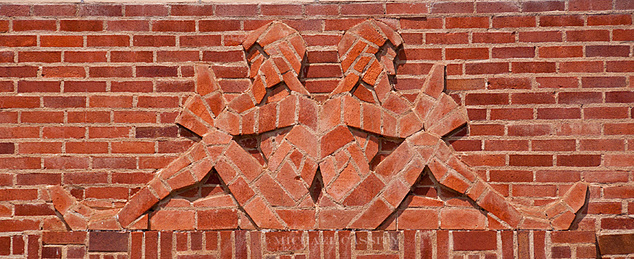
Ornamental brickwork in Lander Grade School, a PWA project, now destroyed.
A PDF OF NEW BOOK !
Building Up Wyoming: Depression-Era Federal Projects in Wyoming, 1929-1943
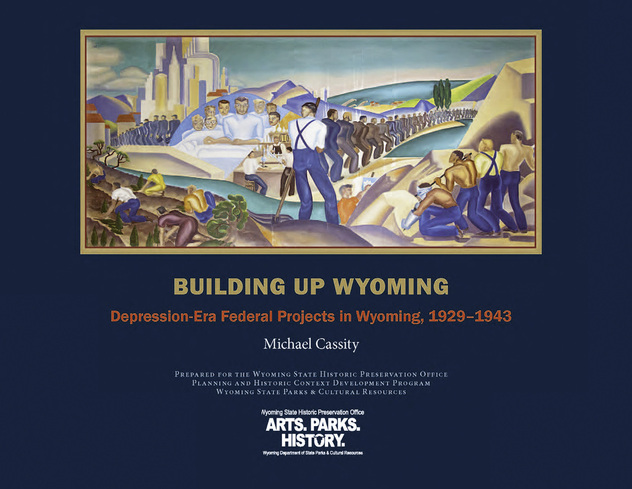
While the book is available at the State Museum Store in Cheyenne, we can also post it here as a PDF where it can be used or downloaded. It is also available on the SHPO webpage.
Click this link to open and download a PDF of the book:
Click this link to open and download a PDF of the book:
Managing and Evaluating Historic Resources of Depression-Era Federal Projects in Wyoming

This guide, distributed by the Wyoming State Historic Preservation Office, is designed to assist cultural resource professionals and others in the determination of eligibility of these resources for the National Register of Historic Places and to provide guidance in their appropriate management. Much of it is extracted from the Multiple Property Documentation Form for Depression-Era Federal Projects in Wyoming that was approved in January, 2013.
The complete guide is available at this link and at the Wyoming SHPO web page for free download. Click on the link below to download the document.
